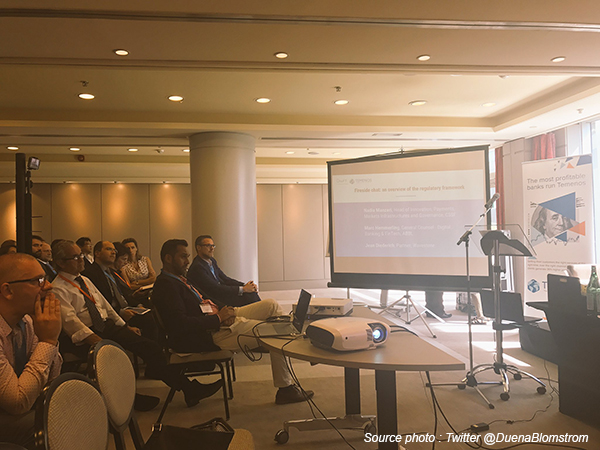TECH NEWS
PSD2: the short and long deadlines
Whether you perceive threats or opportunities from PSD2 (see previous article), the implementation deadline is looming.
July 17, 2017

Whether you perceive threats or opportunities from PSD2, the implementation deadline is looming. From 13th January 2018 clients will be able to allow third parties to access bank payments data. Even so, many of key details of the regulatory technical standards (RTS) are still being debated. What can Luxembourg-based players expect from the legislator and the regulator, and will this be a quick revolution?
By Stephen Evans
Despite some predicting that PSD2 will drive a banking revolution, activity in Luxembourg has been relatively muted. “Maybe the work we are doing is not visible from the outside but around 70 banks have launched a major study about how to comply with PSD2,” commented Marc Hemmerling, General Counsel Digital Banking & FinTech of the ABBL. He was speaking at the 5th July LhoFT/Tenemos PSD2 event. Indeed, Didier Richter of the BIL said discussions at the ABBL had helped them develop their open-banking strategy.
Detailed discussions
A cautious approach probably reflects the fact that many of the details of the regulation have still to be finalised. The European Banking Authority, the Commission, the European Parliament, the financial sector, the IT industry, and consumer groups are currently debating these fine points. There is also work to be done matching this directive with new European data protection law. “I expect the final details of the RTS to be finalised for the second quarter of 2019,” said Nadia Manzari, Head of Innovation, Payments, Markets Infrastructures and Governance at the CSSF.
A particularly controversial topic is “screen scraping”, a technique which enables the collection of data displayed on a screen. There is considerable scepticism about this practice in Luxembourg, largely due to worries over data security. However some member states are enthusiastic. Ms Manzari said she felt the local consensus was that screen scraping is “too risky and that the technology is not mature,” as well as bank interfaces not being ready.
Deadline leeway?
As for the looming implementation deadline, Ms Manzari pointed out that the EU authorities have a tradition of leniency during the initial running-in phase. “This is only my personal position, but from experience we have seen transition periods when European regulators do not sanction non-compliance immediately,” she said. Rather, they prefer to gradually turn up the pressure as the industry adapts. “However, that does not mean you have two years before you can start to think about opening interfaces,” she warned. Things are liable to get tough from Spring 2019.
She also cleared up any lingering doubts about how the payment market has evolved. “It surprises me that some people do not yet fully understand that the likes of Amazon, PayPal, and Google are payment firms just as much as banks,” she said. That said there are on-going discussions about the precise definition of what a payment account looks like.
A revolution?
Will this be an instant revolution, a slow burn, or will nothing much happen? “We have started a five year process of reworking our systems from front to back,” said Didier Richter of the BIL. Will this effort be in vain? “Germany has had an open interface for 13 years, but German banks are still there, and little to no fintech firms have broken though,” commented Nasir Zubairi, CEO of the LHoFT. Kanika Hope of Temenos agreed that banks are well positioned to take advantage of the opportunities presented by open banking and PSD2, as “despite the financial crisis, banks still retain deep client trust.” She believes however that the innovations brought in by new entrants will force banks to step up their game and re-think their customer value propositions.